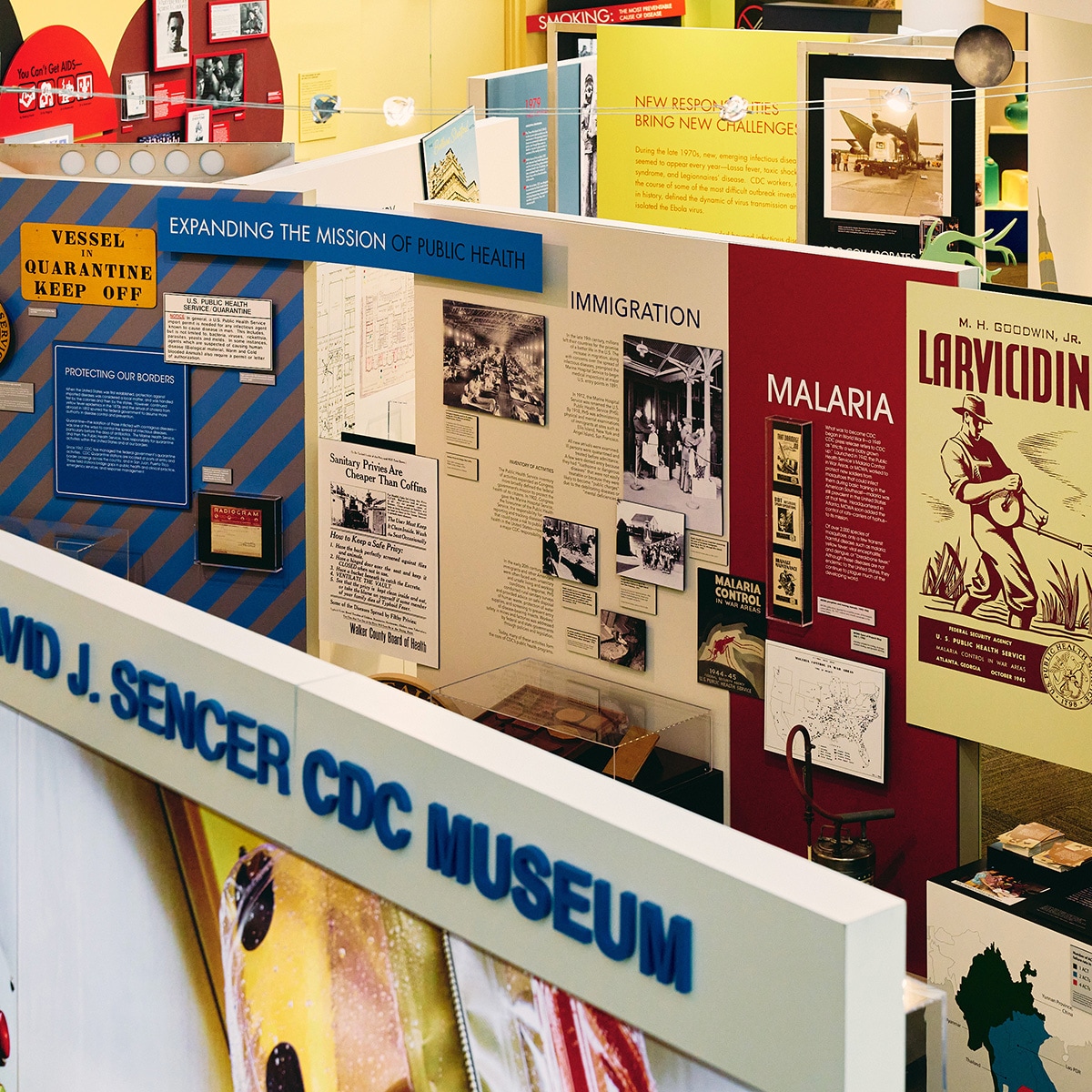Now on Display
The David J. Sencer CDC Museum presents exhibitions that reflect the work of CDC and the historic role of public health in preventing and controlling diseases. New temporary exhibits are always in the works, so please check back with us.
Permanent Exhibitions

This exhibition traces the origins and early history of CDC through its expansion into an agency of public health programs emphasizing prevention. The story is told through documents, photographs and objects from the CDC Collection.
Highlights include an early 20th century quarantine sign, a wooden intelligence test, Dr. Joseph Mountin’s microscope, an iron lung, QUAC sticks used during the Biafra famine, a ped-o-jet used in the campaign to eradicate smallpox, and many more fascinating items and stories.

Spanning 100 feet in length, this unparalleled multi-media installation highlights the world of CDC and public health. Global Symphony communicates public health messages through intriguing narratives alternated with multimedia vignettes. The installation serves as an introduction to CDC and public health for all visitors. Narrative videos describe in depth CDC’s rich history, the agency’s contributions to the elimination of polio, the investigation of Legionnaire’s disease, the battle to stem the rise of obesity in the United States, and the study of how humans, animals, and the environment interact in the spread of Ebola.

This large-scale serpentine stone sculpture was created by renowned artist Lameck Bonjisi of Zimbabwe, who died of AIDS in 2003. The Messengers is an example of Shona sculpture, reflecting traditional and contemporary Zimbabwean culture. The intention of the artist was to honor his ancestors and to represent the strength of families. CDC has chosen the work as a symbol of this facility’s mission – to educate all who visit about the interplay of public health, culture, and community.

This mixed-media installation was created in 2016 by artist Amie Esslinger. Collisions was inspired by the dynamic, microscopic world. It spans 5 feet in diameter and was constructed using paper, foil, balsa wood, foam core, acrylic paint, ink, graphite, acrylic varnish, glue, false eyelashes, thread, silica pellets, mica flakes, on a wood panel.
Temporary Exhibitions

This exhibition provides a small glimpse of CDC’s history and public health accomplishments preserved in more than 16,000 artifacts maintained by the museum.

The Vaccines for Children (VFC) Program has profoundly impacted public health by ensuring young families and children have access to life-saving vaccines since it began in 1994. The program provides free vaccines to eligible children through a network of health care providers, schools, and community centers.